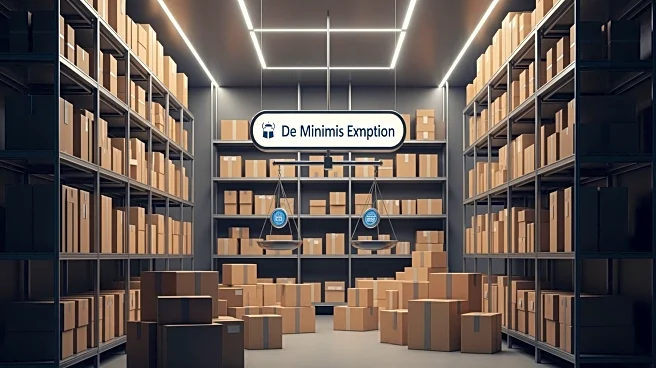What's Happening?
Supply chain managers are grappling with the unpredictability of tariffs and the impact of the ongoing government shutdown, which began on October 1, 2025. The shutdown has halted the publication of vital
federal statistics, complicating the assessment of the U.S. economy's health. Companies are exploring various strategies to mitigate risks, such as stockpiling raw materials and adjusting supply chains. The automotive industry, in particular, faces challenges due to higher tariffs on imported components. Some companies are absorbing tariff costs, while others pass them on to consumers. The suspension of the de minimis rule for customs exemption has further complicated logistics for e-commerce companies.
Why It's Important?
The current situation poses significant challenges for U.S. industries, particularly those reliant on imported materials. The uncertainty surrounding tariffs and the government shutdown could lead to increased costs for businesses and consumers. Companies may need to reassess their supply chain strategies to maintain competitiveness. The strain on consumer finances, evidenced by increased credit card debt and the popularity of buy-now-pay-later schemes, suggests limited consumer capacity to absorb price increases. This could lead to reduced demand, impacting businesses' cash flow and potentially leading to supply chain disruptions.
What's Next?
Businesses may need to adopt more flexible supply chain strategies to navigate the ongoing tariff uncertainty. This could involve diversifying suppliers, reassessing product classifications for tariff calculations, and exploring alternative markets. The government shutdown's duration will also play a critical role in shaping future economic conditions. Companies will need to monitor developments closely and adjust their strategies accordingly to mitigate risks and capitalize on opportunities.












